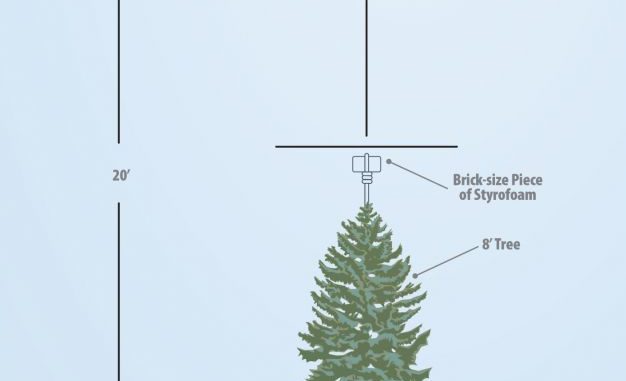
Brush piles are key to spring crappie success
Guide William Sasser can almost always find a place to catch crappie in Clarks Hill Lake, S.C. He estimates that he has about 200 brush piles in the lake.
“I’ve been doing it for years and years: building new brush piles and adding to existing brush piles. As the trees get older, four or five years, they don’t hold as many fish, and you need to brush them up,” he said.
When he starts a new brush pile Sasser likes to use a hardwood tree because they last longer, the limbs are bigger and they hold more fish. Discarded Christmas trees work fine for increasing the size of the brush pile, but you don’t want to just toss them in and let them lie on the bottom.
“It doesn’t do much good to compact them down into the lake because they just kind of disappear and don’t hold a lot of fish,” he said.
The key to making them effectively attract and hold crappie is to make sure they stand vertically in the water column, he said.
“Say you are going to put some Christmas trees on a brush pile in 20 feet of water and you want the trees to stand up 10 feet, but they are only about eight feet tall,” he said. “I will tie two cinder blocks to the bottom with a 3-foot rope, then put a float on top to make the treetop float up.”
The anchor rope can be adjusted to allow the tree to stand 10 feet from the bottom. A half-gallon jug can be used to float the top, but jugs eventually will fill with water, so Sasser uses a brick-sized piece of Styrofoam.
Since fish move from deeper water to the banks to spawn in the spring and then back out in the summer, Sasser likes to have brush piles in 10 feet, 20 feet, 30 feet and 40 feet of water.
“The brush piles in 10 and 30 feet of water would be more in the backs of the coves and creeks, from 10 feet deep out to the center of the cove in 30 feet,” he said. “The brush piles in 20 and 40 feet should be coming out of the coves, out along the main banks in areas like Georgia Little River and the Savannah River.”
Sasser also places brush piles in 20- and 40-foot depths on big flats out in the middle of the lake.
“The water quality back in the creeks goes bad in June and July, and the fish will move out closer to the main river run of the lake,” he said. “I prefer large flats out in the lake where the water depth is the same for a long period of time. They seem to be better than actual creek beds.”
The key, he said, is to stay away from the existing trees that were covered by water when the lake filled more than 60 years ago.
“You don’t want to be competing with those trees,” he said.
Before the lake was created, Sasser noted, hardwoods historically grew in the creek bottoms and on the sides of the hills, but the ridges and upland flat areas were dominated by pines. In the years since they were inundated, the hardwoods are mostly still standing, but the pines have all about rotted down, so those flats are pretty barren, making ideal locations for brushpiles.
There are no laws against putting brush piles in Clarks Hill, S.C., but there are laws prohibiting the harvest of trees and other vegetation on land owned by the U.S. Army Corps of Engineers along the shoreline.
“You can transport any type of tree you want to use in a brush piles to the lake and sink it,” Sasser said. “It just has to be far enough below the surface so it does not create a navigation hazard.”


